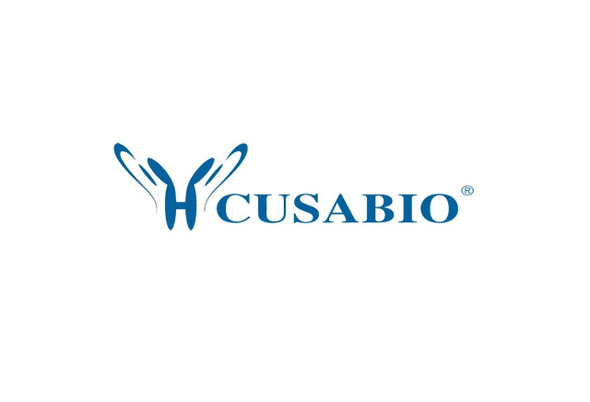Cusabio Human Recombinants
Recombinant Human Uridine-cytidine kinase 1 (UCK1) | CSB-EP025546HU
- SKU:
- CSB-EP025546HU
- Availability:
- 13 - 23 Working Days
Description
Recombinant Human Uridine-cytidine kinase 1 (UCK1) | CSB-EP025546HU | Cusabio
Alternative Name(s): Cytidine monophosphokinase 1Uridine monophosphokinase 1
Gene Names: UCK1
Research Areas: Epigenetics and Nuclear Signaling
Organism: Homo sapiens (Human)
AA Sequence: MASAGGEDCESPAPEADRPHQRPFLIGVSGGTASGKSTVCEKIMELLGQNEVEQRQRKVVILSQDRFYKVLTAEQKAKALKGQYNFDHPDAFDNDLMHRTLKNIVEGKTVEVPTYDFVTHSRLPETTVVYPADVVLFEGILVFYSQEIRDMFHLRLFVDTDSDVRLSRRDKEVCRCDHPARSGQYGCHQPDRAAHPGHSEW
Source: E.coli
Tag Info: N-terminal 6xHis-SUMO-tagged
Expression Region: 1-201aa
Sequence Info: Full Length of Isoform 2
MW: 38.8 kDa
Purity: Greater than 90% as determined by SDS-PAGE.
Relevance: Phosphorylates uridine and cytidine to uridine monophosphate and cytidine monophosphate. Does not phosphorylate deoxyribonucleosides or purine ribonucleosides. Can use ATP or GTP as a phosphate donor. Can also phosphorylate cytidine and uridine nucleoside analogs such as 6-azauridine, 5-fluorouridine, 4-thiouridine, 5-bromouridine, N(4)-acetylcytidine, N(4)-benzoylcytidine, 5-fluorocytidine, 2-thiocytidine, 5-methylcytidine, and N(4)-anisoylcytidine.
Reference: Phosphorylation of uridine and cytidine nucleoside analogs by two human uridine-cytidine kinases.Van Rompay A.R., Norda A., Linden K., Johansson M., Karlsson A.Mol. Pharmacol. 59:1181-1186(2001)
Storage: The shelf life is related to many factors, storage state, buffer ingredients, storage temperature and the stability of the protein itself. Generally, the shelf life of liquid form is 6 months at -20?/-80?. The shelf life of lyophilized form is 12 months at -20?/-80?.
Notes: Repeated freezing and thawing is not recommended. Store working aliquots at 4? for up to one week.
Function: Phosphorylates uridine and cytidine to uridine monophosphate and cytidine monophosphate. Does not phosphorylate deoxyribonucleosides or purine ribonucleosides. Can use ATP or GTP as a phosphate donor. Can also phosphorylate cytidine and uridine nucleoside analogs such as 6-azauridine, 5-fluorouridine, 4-thiouridine, 5-bromouridine, N(4)-acetylcytidine, N(4)-benzoylcytidine, 5-fluorocytidine, 2-thiocytidine, 5-methylcytidine, and N(4)-anisoylcytidine.
Involvement in disease:
Subcellular Location:
Protein Families: Uridine kinase family
Tissue Specificity: Ubiquitous.
Paythway:
Form: Liquid or Lyophilized powder
Buffer: If the delivery form is liquid, the default storage buffer is Tris/PBS-based buffer, 5%-50% glycerol. If the delivery form is lyophilized powder, the buffer before lyophilization is Tris/PBS-based buffer, 6% Trehalose, pH 8.0.
Reconstitution: We recommend that this vial be briefly centrifuged prior to opening to bring the contents to the bottom. Please reconstitute protein in deionized sterile water to a concentration of 0.1-1.0 mg/mL.We recommend to add 5-50% of glycerol (final concentration) and aliquot for long-term storage at -20?/-80?. Our default final concentration of glycerol is 50%. Customers could use it as reference.
Uniprot ID: Q9HA47
HGNC Database Link: HGNC
UniGene Database Link: UniGene
KEGG Database Link: KEGG
STRING Database Link: STRING
OMIM Database Link: OMIM









